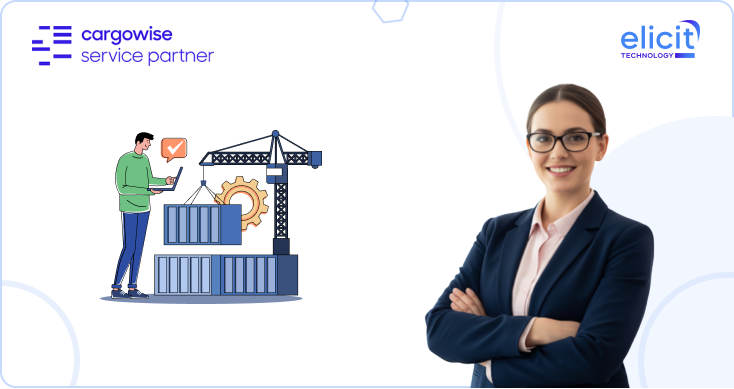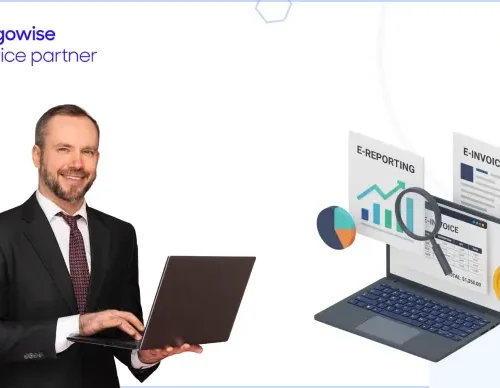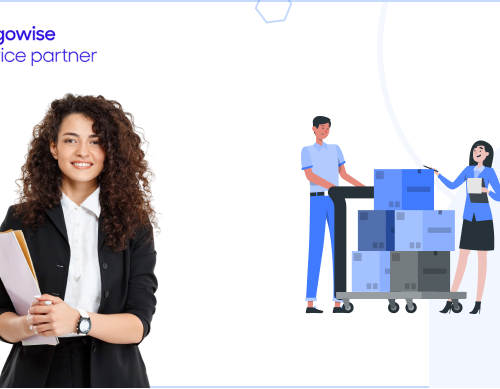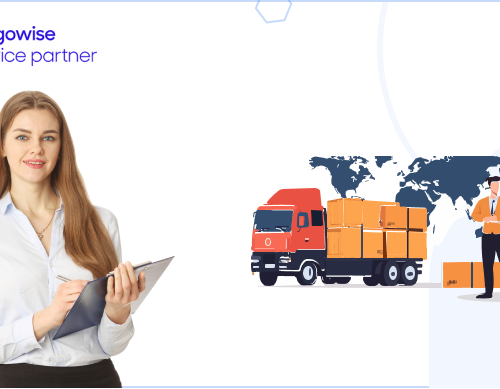Imagine managing a large export shipment where every container is fully utilized, no shared cargo, no splitting space with other exporters, just one shipment, one shipper, and one container (or several full ones). That’s the essence of Full Container Load (FCL).
In global trade, registering an FCL shipment efficiently is more than just an administrative step. It’s about ensuring accuracy, compliance, and visibility right from the start. For forwarders using CargoWise, mastering the FCL registration process is key to minimizing delays, keeping customers happy, and maintaining smooth operational flow.
This guide walks you through how to register an Export Sea Freight FCL in CargoWise, why it matters in today’s logistics environment, and how freight forwarders can optimize the process for efficiency.
What is an FCL and Why Does it Matter?
A Full Container Load (FCL) refers to a shipment where a container is loaded with cargo for a single shipper. Unlike LCL (Less than Container Load), where goods from multiple shippers share space in a container, FCL shipments are:
Faster to process — fewer touchpoints mean fewer delays.
More secure — since only one shipper’s goods are in the container, risks of damage or misrouting are reduced.
Cost-effective for volume shippers — when a container is filled, the per-unit cost of transport decreases.
For exporters and freight forwarders, properly registering FCL shipments in CargoWise ensures clean documentation, compliance with customs requirements, and accurate billing.
Where Do You Start When Registering an FCL in CargoWise?
The process begins in the Forwarding module:
- Go to Operate → Forwarding → Consolidations.
- Click New to open a fresh Consolidation record.
Under the Details tab, select:
- Type: Agent
- Transport Mode: SEA (Sea Freight)
- Container Mode: FCL
From there, you’ll input the First Load Port and Last Discharge Port, the origin and destination points of your shipment.
This is where accuracy is critical: incorrect ports or modes can lead to delays, compliance issues, and billing errors.
What Voyage and Vessel Information Should You Add?
Under the same Details tab, you’ll need to enter voyage-specific details:
- Voyage number (if available)
- Vessel name (either manually entered or searched in CargoWise)
- ETD (Estimated Time of Departure) and ETA (Estimated Time of Arrival)
If you already have a Bill of Lading (BOL) number from the shipping line, enter it here. If not, leave it blank for now.
At this stage, you can also add extra routing legs under the Routing tab, which is helpful for shipments involving transshipment ports.
How Do You Confirm Service Levels and Payment Types?
Next, you’ll confirm the Service Level and Payment Type using the drop-down menus. This ensures the shipment aligns with customer expectations and your billing practices.
For example:
- Service Level might indicate Standard, Priority, or Express.
- Payment Type could determine whether the shipment is prepaid or collected.
- Getting this right upfront reduces the risk of payment disputes or customer dissatisfaction.
Which Organizations Need to Be Added?
In the Organizations tab, CargoWise allows you to enter or confirm:
- Sending and Receiving Agents
- Carrier details
- Creditor
- Booking and Agent References
Often, these fields will auto-populate from the linked forwarder records, but verifying them avoids mismatched data between partners.
What About Departure and Container Terminal Details?
Under the Departure tab, you’ll capture:
CTO (Container Terminal Operator) — the port or wharf handling the container.
CFS (Container Freight Station) — the packing depot.
Much of this may populate automatically, but confirming accuracy here ensures your shipment moves through the port smoothly without terminal misrouting.
How Do You Register Containers in CargoWise?
The Containers tab is one of the most critical steps:
- Enter the Container Number (if already assigned).
- Specify the Count, Mode, and Container Type.
- For multiple containers, enter each on a new line.
- Double-check Tare Weight, reefer settings (if refrigerated), and measures.
- Include Export Process data like Empty Release Number, Empty Required By, etc.
This section is crucial for tracking, compliance, and billing, a wrong container number could disrupt customs clearance.
How Do You Create the Shipment (House Bill of Lading)?
Once the consolidation is set up, you’ll move to the shipment stage:
- Back under Details, click New to open a new Shipment.
- The Transport Mode and Container Type default from your Consolidation settings.
- Enter Consignor/Shipper and Consignee details.
- Leave the House Bill number blank, CargoWise will auto-generate it on save.
- Ports and dates will auto-populate, but you can adjust them if necessary.
At this stage, you’ll also add:
- Weight, Volume, Packs
- Goods Description, Marks & Numbers
- Insurance Values
- INCO Terms and Release Type
This ensures the House Bill reflects both commercial and regulatory requirements.
How Do You Pack Containers in CargoWise?
In the Packing tab:
- The system shows your Consol and Container details.
- You then specify Packs and Types for each container.
- Add Weight and Volume for each pack line.
If goods are Dangerous Goods, you must also record:
- DG Substance
- DG Class
- UNDG Contact Information
This step is essential for compliance with IMO and international safety standards.
What About Pickup and Local Transport Details?
In the Pickup tab, you’ll enter:
- Export Broker details
- The local cartage company is responsible for pickup
- Pickup and delivery addresses
- Pickup requirements
This ensures the first mile of the shipment is as streamlined as the port operations.
How Do You Finalize and Generate Documents?
Once everything is entered:
- Save and link the Shipment to the Consolidation.
- Confirm the Shipment and Consol numbers in the grid.
- Generate documents (e.g., Bill of Lading, Cargo Manifest, Export Invoice) directly from CargoWise.
- At this point, your FCL registration is complete and ready for execution.
Conclusion
Registering an Export FCL in CargoWise isn’t just about ticking boxes, it’s about building efficiency, compliance, and accuracy into your forwarding operations. By following these structured steps, forwarders can:
- Avoid costly mistakes with ports, container numbers, or documents.
- Ensure compliance with customs, carriers, and safety authorities.
- Deliver a smoother, more transparent experience to shippers and consignees.
Want to optimize your CargoWise workflows?
As certified CargoWise consultants, we help freight forwarders streamline their FCL registrations, reduce errors, and improve visibility across every shipment. Let’s talk about how we can make your CargoWise setup work smarter for your business.






